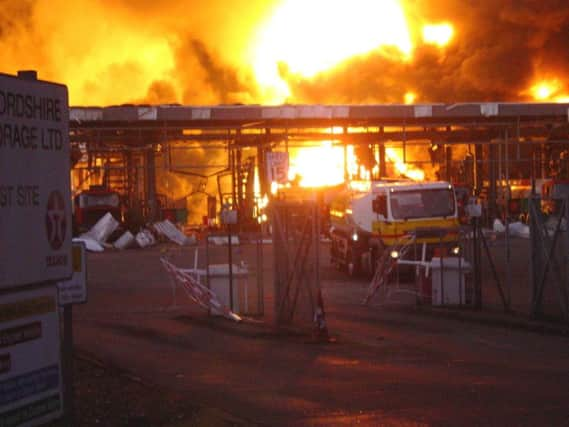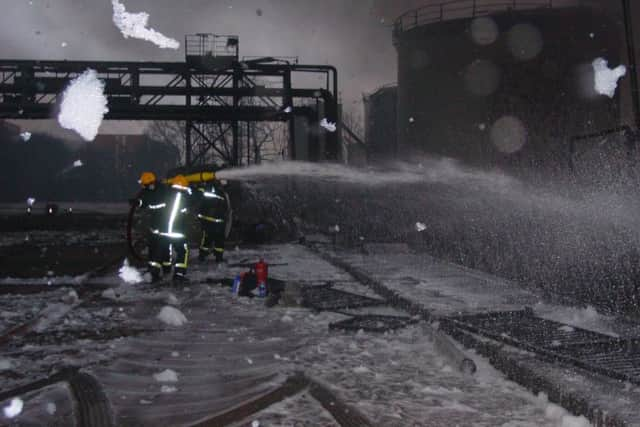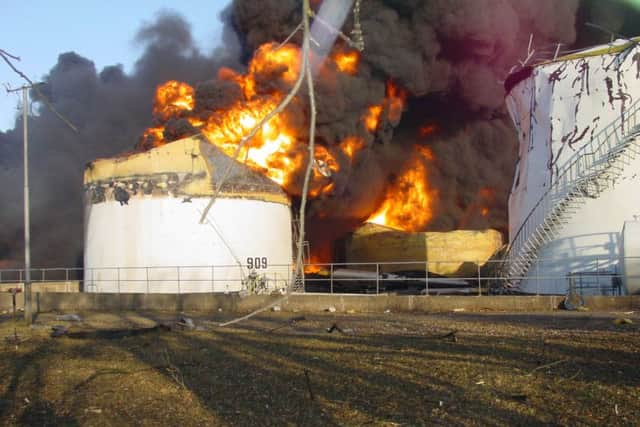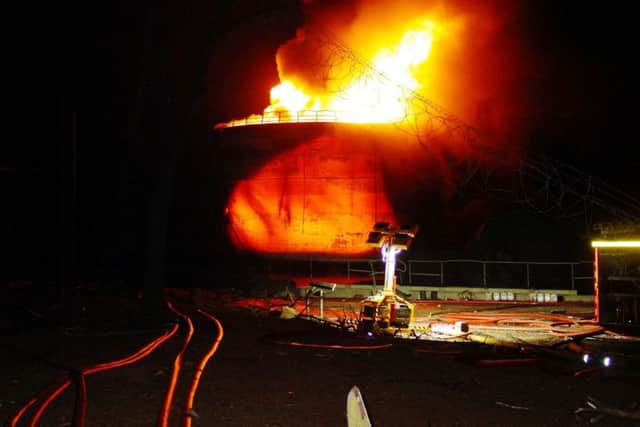Buncefield firefighter eyewitness: ‘It was like the Apocalypse’


At 6.02am on Sunday, December 11 2005, a fuel vapour explosion equivalent to 30 tonnes of TNT at the depot triggered a blast wave which was heard as far away as Holland.
In what many would describe as a miracle, nobody was killed in the explosion or the resulting three-day blaze, which was and remains the biggest peacetime blast in Europe.
Advertisement
Hide AdAdvertisement
Hide AdFireman Jon Batchelor was in charge of the first engine on the scene, and he said: “Everyone heard the bang so we were ready for a big fire but nothing could have prepared us for the scene we were confronted with.


“As we arrived at the business park we could see flames climbing hundreds of feet into the dark sky, making it almost seem like daylight.
“It was a scene of utter devastation, with buildings severely damaged and glass and debris lying across the road.
“It was simply the biggest fire that I had ever seen and I immediately radioed the control room and declared it a major incident.
Advertisement
Hide AdAdvertisement
Hide Ad“That’s normally a big decision, and one that would be taken by someone a lot more senior than me, but in the circumstances it was a very easy call to make.”


Hertfordshire’s response helped form today’s national template for tackling major incidents. The lessons learnt from the incident also led to improvements in how fire services work together and plan for similar events in future.
Roy Wilsher, Chief Fire Officer and Gold Commander for the incident, said: “Buncefield was by far the biggest incident the Hertfordshire Fire and Rescue Service has ever dealt with, and I’m very proud of our response.
“We had plans to tackle an incident at the site and thankfully those worked well.
Advertisement
Hide AdAdvertisement
Hide Ad“Our fire fighters worked incredibly hard with colleagues from across the country and it’s a testament to their professionalism that we managed to contain the blaze.”


Former fireman and crew commander Dave Humphreys, 57, from Flaunden, was not on duty at the time of the blast and remembers waking up to ‘a gust of wind’.
He said: “The curtains were flapping horizontally above the bed and when I looked out of the window, the sky was glowing red.
“I got the call to go into work and I thought it was a plane crash at first but as I drove towards it, I knew it was something bigger.”
Advertisement
Hide AdAdvertisement
Hide AdWhen Mr Humphreys, who retired seven years ago, arrived on the scene at around 9am, he said it was ‘utter devastations – like the apocalypse’.
He said: “You had to turn 180 degrees to take in the full extent. It was like a war zone.
“We’d had training exercises up at the depot before, but all the equipment we had been trained to use, like the water reservoirs, had been destroyed so we really had to use our initiative.
“It was by far biggest job in my 32-year career and I feel privileged to have been part of it.
Advertisement
Hide AdAdvertisement
Hide AdAt the time 370 businesses and 3,500 jobs were affected by the explosion but since 2005, Herts County Council have helped the Maylands Business Park recover and it’s now a thriving business centre once again.
Richard Thake, Hertfordshire County Council Cabinet Member for Community Safety, said: “Make no mistake, the Buncefield explosion was a disaster. Not in terms of loss of life, but certainly measuring huge damage done to the local economy and people’s lives.
It speaks volumes that the county council and its partners have been able to re-establish the Maylands Business Park which is, once again, a thriving hub of enterprise.”
The business community has responded so strongly that chancellor George Osborne recently announced the creation of an Enterprise Zone in West Hertfordshire, including Maylands Business Park.
Advertisement
Hide AdAdvertisement
Hide AdThis zone is set to deliver thousands of jobs and attract hundreds of new businesses.
Buncefield: The facts
> The explosion measured 2.4 on the Richter scale
> The blast wave shook buildings 25 miles away, rattled windows and letterboxes on the coast and was heard in mainland Europe
> The smoke produced by the fire spread out across London, the south East and across France – it was even visible from outer-space
> 22 fire services from across the country helped Herts Fire and Rescue tackle the blaze, which burned for three days before finally being bought under control on December 13
Advertisement
Hide AdAdvertisement
Hide Ad> 60 people were treated for injuries sustained during the blast, but no one died
> 92 businesses, employing 9,500 workers were affected by the explosion. In the subsequent decade businesses have recovered with the nearby Maylands business park now part of the a West Hertfordshire Enterprise Zone
> Many nearby homes suffered cracked walls, smashed windows and collapsed rooftops
Tackling the blaze in numbers
> Crews used 786,000 litres of foam concentrate to tackle the blaze (at a cost of £1.4m)
Advertisement
Hide AdAdvertisement
Hide Ad> 53 million litres of water was used – 10 million litres of which was recycled
> 25 fire engines were on site at height of incident
> 1,000 different staff were involved from across the country
> 100 million litres of oil product was on site, with 60 million litres in the immediate area of fire
> More than 700 other emergency calls were dealt with during the fire